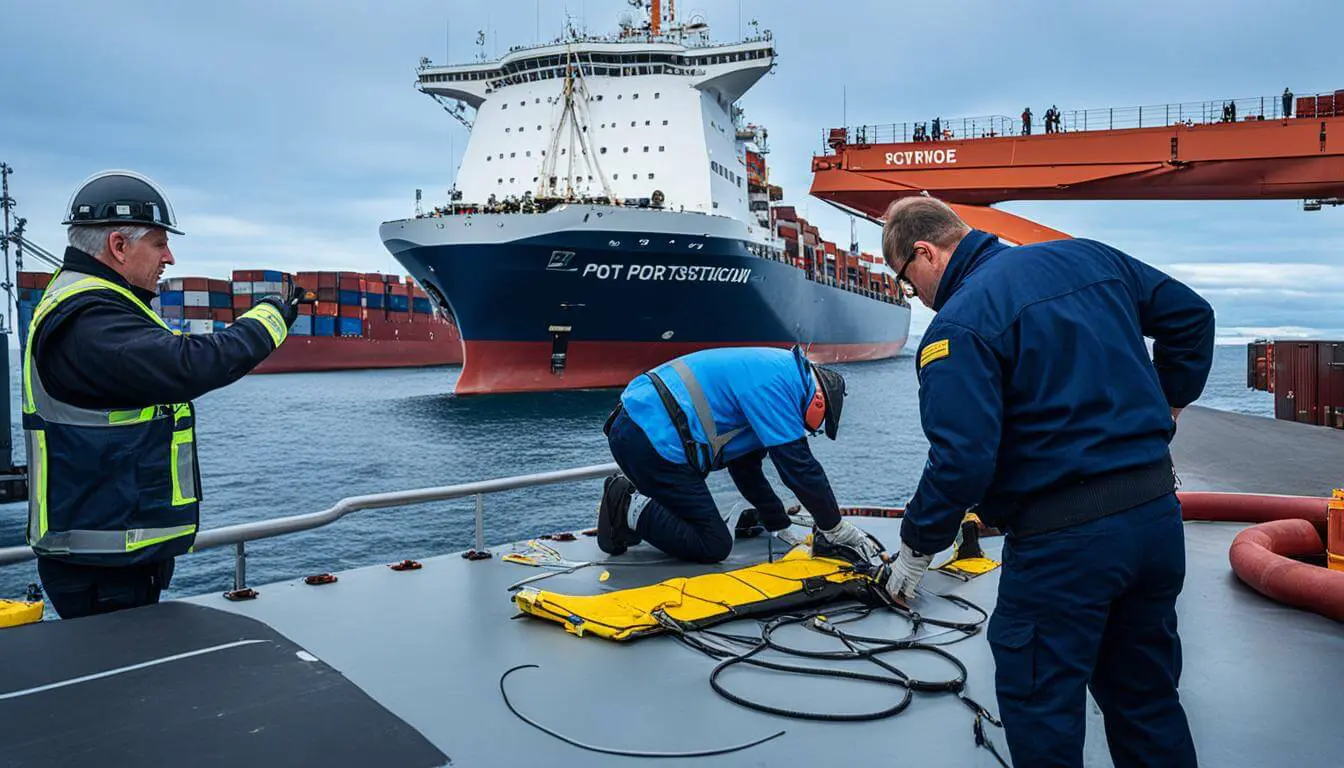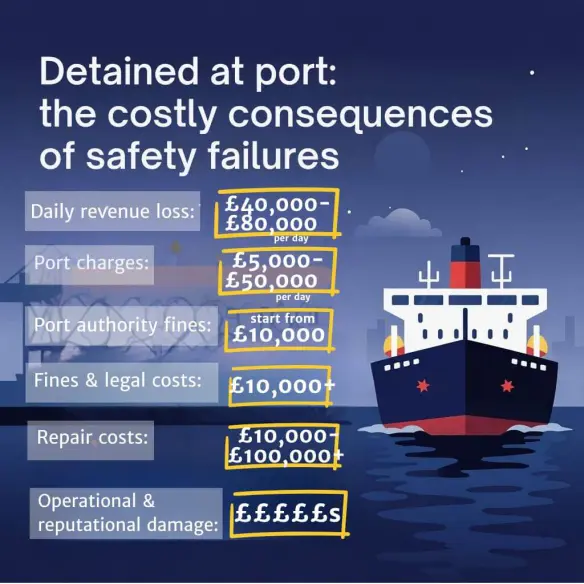When a ship is detained at port due to safety failings, the consequences can be severe. From missed schedules and mounting fines, to reputational damage and contract breaches, the financial and operational impact quickly adds up.
A vessel can be detained if a Port State Control (PSC) officer deems it to have deficiencies that pose a risk to the ship, its crew, the environment, or if it’s unfit to proceed to sea. A non-compliant fire suppression system, expired safety certificates, or other regulatory failures can be enough to trigger a PSC detention, keeping a vessel stuck alongside until all deficiencies are rectified.
For operators, a port detentions isn’t just an inconvenience – it’s a costly disruption that affects crew, cargo, and bottom lines.
Daily loss of revenue
Depending on the size and type of the ship, vessels can lose thousands to millions of GBP daily from halted operations. For example, large container ships can generate revenue of £40,000 to £80,000 per day, and losing even a day could lead to significant losses.
Port charges
While docked, the ship may incur port charges ranging from £5,000 to £50,000 per day, depending on the port and the size of the vessel. If the vessel is stuck for multiple days, these costs can quickly escalate.
For example, Rye Harbour in England charges £4 per metre of the vessel’s length per day for docking fees related to repairs or maintenance. For a 200-metre vessel, this equates to £800 daily.

